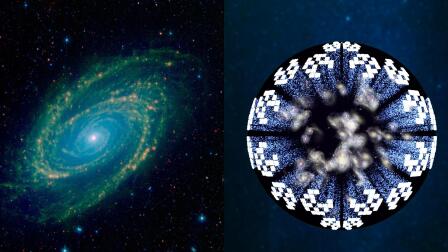Back to Show
PBS Space Time
Can The Crisis in Cosmology Be Solved With Cosmic Voids?
Season 9
Episode 34
Two of the greatest mysteries in cosmology are the nature of dark energy and the apparent conflict in our measurements of the expansion rate of the early versus the modern universe that even dark energy can’t account for. Could both of these be explained by looking to a part of the universe that we’ve largely ignored so far? Could cosmic voids be driving the universe?
Sign up now for inspiring and thought-provoking media delivered straight to your inbox.
Support Provided By

14:39
Can solving quantum cryptography prevent us from digital collapse...and are we close?

10:47
Fundamental kinks in the universe may evolve into complex structures within the stars.

13:29
We explore if chasing the beauty in physics is an actual good course of action.

11:13
This how we finally figured them out.

13:42
We discuss the incredibly ambitious plans for future colliders.

10:41
We take a look at the dysfunctional stellar relationships among the stars.

11:22
The boundary between neutron stars and black holes promises to reveal secrets of both.

12:43
The most precious substance in our universe is not gold, nor oil. It's antimatter.

11:32
Despite what the cosmic censorship hypothesis suggests, naked singularities may exist.

13:12
It's very hard to study black holes but studying black hole analogies makes it easier.

14:34
Sir Roger Penrose's Conformal Cyclic Cosmology hypothesis.

13:58
Viruses don’t just influence organisms, they’re incredibly important on a planetary scale.











